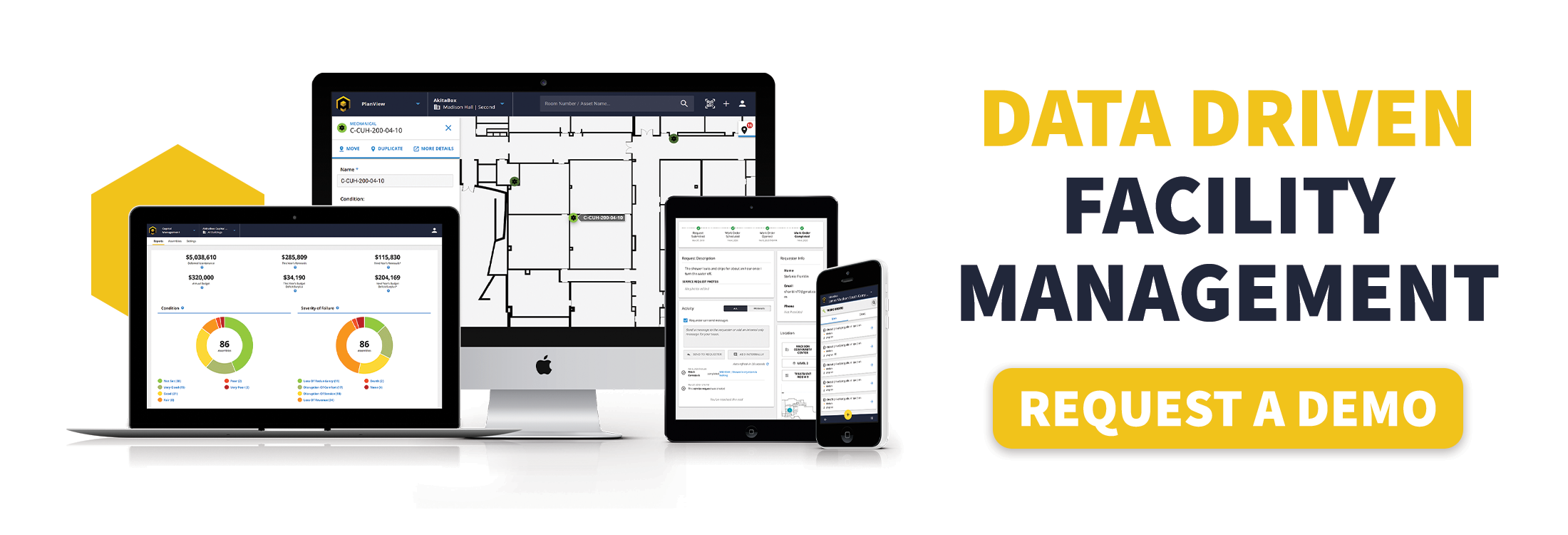Items and equipment like fire extinguishers, AED, oxygen lines, exit signs, and more need to be maintained in order to save lives when a facility faces an emergency.
That’s why it’s so important for facilities teams to have an accurate inventory of life safety assets and ensure they are effectively maintained. Strategic repair and maintenance activities not only help maintain asset performance and extend equipment life cycles, they can also reduce time and labor costs.
So why doesn’t everyone do this? Oftentimes, the pain points of life safety asset management (LSAM) get in the way.
The Pain Points of LSAM
High Volume of Assets
Facilities teams need to leverage processes to accurately inventory, categorize, and account for all equipment and assets. This helps track and maintain systems in order to ensure optimal working conditions while preventing problems. But with a high volume of assets, many leaders are unsure of which approach to take.
Cataloged, Not Mapped
Some facilities still rely on outdated cataloging processes in order to keep track of assets. This can mean field teams lack access to the accurate information they need, resulting in more work and slower operations. An out-of-date cataloging system can also create operational confusion, meaning decision makers don’t have the information they need to make and support important decisions.
No Systematic Approach
The failure to map assets, along with the lack of a systematic approach, can lead to catastrophic problems. A top-to-bottom approach that continues throughout an asset’s lifecycle—from planning and acquisition to operation, maintenance, and disposal—can help facilities teams plan, track, and complete maintenance more efficiently.
Movable Assets are Missed in Documentation
Movable assets can be easily missed in the documentation process, especially if a facility is using a paper-based system. This not only slows down response times, but increases the difficulty of asset inspections, maintenance, and repairs. In an emergency situation, a slower response time can unfortunately be the difference between literal life and death.
With all these moving parts, it’s no wonder that facilities teams, third party vendors, and LSAM-dedicated teams for compliance at hospitals, nursing homes, and other facilities have such a hard time keeping track of all their life safety asset needs.
How to Solve LSAM Challenges
Track Assets
A state-of-the-art facility management software solution can help your organization track assets using a map-based solution, meaning teams can quickly locate key equipment by name, floor, room, category, ID, type, or where it’s placed on your floor plan. This creates clarity on asset management, provides a thorough and complete record of assets, and improves efficiency and response times—including emergency response.
Guide the Documentation Process
Such a solution can also guide the documentation process, from mapping assets against current floor plans and collecting asset data, to standardizing, importing, and pinning that data on a digital, location-based floor plan.
Tie LSAM Issues to Work Orders
The right facility management software system for your organization should also be able to tie LSAM issues to work orders. This means time spent filling out paper work orders or inspection checklists can be reclaimed, allowing technicians to focus on open work orders and troubleshoot and triage maintenance requests faster.
AkitaBox Is Here to Help
By utilizing the AkitaBox building management platform, your organization will be able to:
- Compile reliable facilities data in a single source of truth
- Reclaim time spent filling out paper-based work orders or inspection checklists
- Optimize software training of new and current facilities employees
- Reduce technician time spent completing inspections by up to 50%, saving money
|
— Todd Erdman, Maintenance Technician, Sr., UW Health |
Ultimately, a good life safety asset management strategy provides a holistic view of what an organization owns or leases, its condition, location and when it will next need to be maintained or replaced. This not only simplifies the budget planning process for facilities managers, it enables effective planned maintenance, optimizes operational performance, reduces backlog liabilities, minimizes whole life costs, and supports an organization’s corporate goals.
Learn more about how our solution can be implemented by checking out our Case Study with UW Health. Ready to get started? Schedule a demo.

